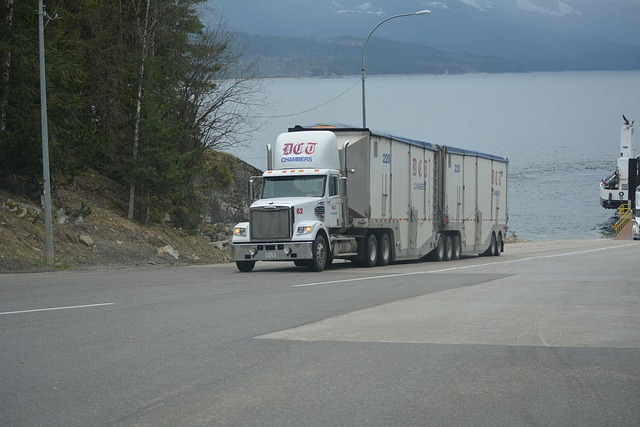Fleet discounts, including reduced rates on fuel, maintenance, insurance, and vehicle purchases, significantly enhance operational efficiency and financial health when strategically implemented. Among these incentives, liability coverage for fleets is a critical but often overlooked aspect that offers essential protection against risks and legal liabilities. By understanding the interplay between incentives and liability management, fleet operators can make informed decisions, such as choosing providers offering both discounted services and comprehensive liability coverage, leading to long-term cost savings, risk mitigation, and peace of mind for focused core operations. Effective strategies include negotiating liability coverage rates, bundling services, staying informed about market trends, and tracking key metrics like fuel consumption and insurance claims.
In today’s competitive landscape, understanding and leveraging fleet discounts and incentives is crucial for businesses aiming to maximize savings. This article guides you through the intricacies of these benefits, focusing on liability coverage for fleets as a key component. We explore strategic approaches to maximize discounts, highlighting effective methods for tracking their impact. By delving into these tactics, businesses can navigate the complex world of fleet management with enhanced efficiency and cost-effectiveness.
Understanding Fleet Discounts and Incentives

Fleet discounts and incentives are powerful tools that, when understood and leveraged correctly, can significantly enhance operational efficiency and financial health. These offers typically come in various forms, including reduced rates on fuel, maintenance services, insurance, and even vehicle purchases. One often overlooked but critical aspect is the role of liability coverage for fleets. Adequate insurance protection is essential to safeguard against potential risks and legal liabilities that may arise from fleet operations, ensuring businesses stay protected while maximizing savings from discounts.
By recognizing the interplay between these incentives and liability management, fleet operators can make informed decisions. For instance, choosing a provider offering both discounted services and comprehensive liability coverage for fleets can lead to substantial cost savings in the long run. This strategic approach not only optimizes financial performance but also mitigates risks, providing peace of mind and allowing businesses to focus on core operations.
The Role of Liability Coverage for Fleets

Liability coverage for fleets is a cornerstone in maximizing the advantages of fleet discounts and incentives. It serves as a protective measure, shielding businesses from potential financial burdens resulting from accidents or damages involving their vehicles. By ensuring comprehensive liability insurance, fleet managers can benefit from reduced risks, allowing them to negotiate better terms with insurers and service providers. This, in turn, translates into cost savings that can be redirected towards enhancing other aspects of the fleet operation, such as vehicle maintenance and driver training.
Moreover, adequate liability coverage fosters trust among customers and partners. Knowing that the fleet is insured reassures stakeholders that the business operates responsibly and prioritizes safety. This enhanced reputation can lead to improved relationships and more lucrative partnerships, ultimately contributing to the overall success of the fleet discounts and incentives program.
Strategies to Maximize Savings

To maximize savings from fleet discounts and incentives, businesses should implement strategic approaches that go beyond simple cost reduction. One key strategy is to leverage liability coverage for fleets as a negotiable item. By understanding the insurance needs of your fleet and shopping around for competitive rates, you can secure significant discounts while ensuring adequate protection. This not only enhances financial viability but also demonstrates proactive risk management.
Additionally, consider bundling services and packages tailored to fleet operations. Many providers offer discounted rates when multiple services such as maintenance, fuel, and telematics are bundled together. Regularly reviewing and negotiating these agreements can unlock further savings over time. Moreover, staying informed about market trends and competitor pricing allows for strategic adjustments, ensuring your business stays ahead in maximizing fleet incentives.
Measuring Success: Tracking Fleet Discounts' Impact

Measuring the success of fleet discount and incentive programs is crucial to understanding their true impact on operations and cost savings. Tracking key metrics related to these initiatives can provide valuable insights into which strategies are effective and where adjustments might be needed. For instance, monitoring fuel consumption rates alongside discounted purchases offers a clear view of the program’s influence on overall operational costs, especially considering the significant role liability coverage for fleets often plays in these scenarios.
By analyzing data over time, fleet managers can identify patterns and trends that highlight successful programs. This may include reduced insurance claims due to safer driving practices encouraged by incentives or decreased maintenance expenses resulting from more efficient vehicle usage. Such data-driven insights enable informed decisions on refining discount strategies and ensuring the program aligns with the fleet’s overall goals and financial health.
By understanding and implementing effective strategies, fleet managers can unlock significant savings through discounts and incentives. The article has highlighted the importance of liability coverage as a key component in this process, ensuring both cost-efficiency and compliance. By tracking the impact of these initiatives, managers can continue to refine their approach, maximizing the advantages for their operations. This data-driven approach allows fleets to stay competitive in today’s market while enhancing overall efficiency.
